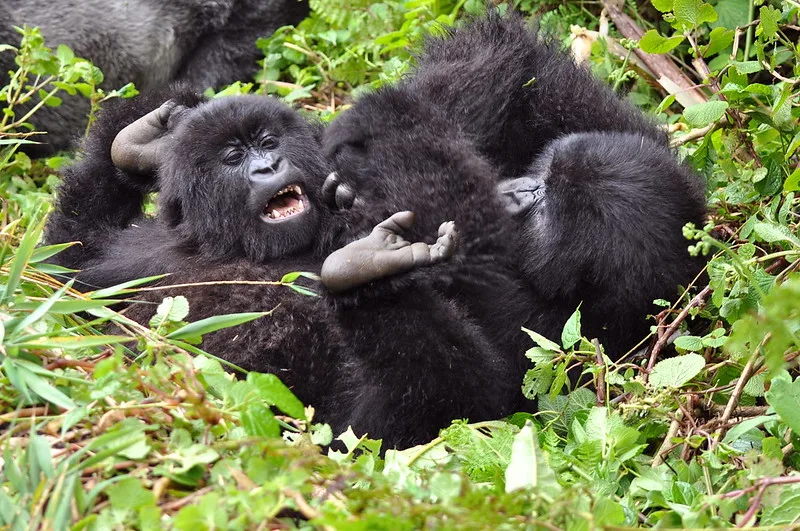Conservation was high priority under Belgian-Rwanda gorillas.
Under Belgian control, conservation came first in Rwanda. Prince Albert, Leopold’s son, had seen Yellowstone and developed support for national parks. Under the encouragement of Carl Akeley and with father assistance, the Virunga national park was established in 1925 specifically to protect its mountain gorillas.
Expanded into nearby Congo in 1929, the Albert Park would finally occupy more than four thousand square kilometers. Designed to safeguard the varied species assemblages of a savanna wetlands complex spanning one thousand square kilometers of Eastern Rwanda, the Akagera Park was established later in 1934 Though the Belgians fiercely exploited the most lucrative hard woods, the vast forest reserves along the Congo-Nile split also attracted fresh interest.
The Belgians implemented various policies and practices throughout Rwanda’s inhabited terrain that would eventually increase human pressure on protected areas, particularly in the highlands, therefore intensifying their impact. Promoted to boost local income and overseas exports were cash crops. From the original 1,300 acres, tea was grown on additional 20,000 acres in the highlands and pyrethrum was added in the 1940s to provide pesticides for the war effort.
Under penalty of fines, Rwandan farmers were compelled to grow commercial crops for which they got little pay. Still, they hooked onto white potatoes as a subsistence crop. Almost all of it in Northern Rwanda’s higher elevation zones, potato output skyrocketed from three thousand acres in 1930 to 85,00 acres in 1942.

But the next year a fungus known as the “black blight” destroyed the whole crop. Like in Ireland a century earlier, a sizable population depending on the potato went hungry. Still, there was no structure in place to assist the colony split from Belgium during World War 11. Under Belgian Tutsi control, N Northern Hutu was not a preferred constituency even if support were available. During the 1943–44 potato famine, almost 100,000 northerners perished.
The Belgian government sent new blight resistant potato varieties after the war, and highland farmers slowly, albeit cautiously, resumed output. Unlike most other African colonies, Rwanda’s per capita food output was constant during the postwar era. This was more of a result of clearing additional territory—especially wetlands—than of increased output. Particularly in wetlands, forest areas rather than increased output.
Not only were forest areas removed. The Belgians made the remarkable decision in 1958 to turn over more than twenty thousand acres of Virunga parkland for use as farming. This was among the first in positions of removing protected territory from a recognized national park context, therefore creating a hazardous precedent inside Rwanda and internationally.
Human population pressure was the direct cause of the Virunga parkland change. Under the Belgians, the average health of a Rwandan became much better. Modern drugs delivered via a small network of hospitals and clinics raised life expectancies while infant mortality dropped.
Improved health programs combined with more food production produced shockingly rapid human population expansion. Hutu made up 85% of the more than three million Rwandan population that increased from one million at the start of the past century by the end of the Belgian rule in 1962.
The Belgians kept up their indirect authority via the Tutsi throughout their stay in Rwanda. Though the county has many thousand officials, technicians, and private individuals, the Belgians participated significantly more directly in daily colony administration than the Germans before them. Still, they kept the Tutsi monarchy’s front.
They clearly preferred the Tutsi above others in trade and education in reward for this performance. But eventually the Belgians also gave Hutu complaints a forum. Starting in the 1950s, Hutu leaders from Southern and central Rwanda started distributing pamphlets denouncing the preferential treatment of Tutsi with respect to employment and educational possibilities.
Outside of Rwanda, mean while, ant colonial feeling was growing on the twin foundations of Gandhi’s non violent triumph against the British in India and the military success of the Vietnamese over the French. As the decade unfolded, calls for improved Hutu treatment increasingly blended with manifestos advocating for independence.
For some Belgians, the logic of the former and the certainty of the latter spoke to them. Eventually, socialists and Catholics created an unexpected coalition in support of handing the Hutu majority independence, which they saw to be a far-off and hence controllable reality, power.
JEAN PAUL HARROY talked with remarkable clarity. In his nineties, a small round guy, he told his single part in Rwandan history while continuously jabbing his stubby fingers into the air. First warden of the Albert Park Virunga area. Author of Rwanda terre qui pleurt (Rwanda: The land the weeps) offers a moving if somewhat theatrical narrative of the nation’s ongoing struggle with resource depletion.
Last governor general of Rwanda Urundi; after independence he would be appointed secretary general of the International Union for the Conservation of Nature in 1980, although he would meet with bills at his residence at the free university of Brussels, where he was professor emeritus.
Harroy was instructed to encourage a revolt to let the Hutu overthrow the Tutsi during his term as governor general. This was to happen exclusively in Rwanda, despite a similar Hutu majority in neighboring Burundi in his own account. Harroy subtly shared this knowledge with important Hutu leaders, primarily from Southern Rwanda, who subsequently looked immobilized by the possibility.
They were evidently unprepared for forceful action after decades of Tutsi domination, even if they had developed skill in formulating political manifestos. The Northern Hutu had no such difficulties. Knowing the Belgians would not help their Tutsi clientele, they sharpened their machetes and spears, left their mountain villages in Ruhengeri and Gisenyi and started slaughtering.
During the short but brutal revolution of 1959, tens of thousands of Tutsi perished.As the Hutu cemented their hold over Rwanda, hundreds of thousands fled into nearby Burundi, Uganda, and Congo. Hutu troops, now Belgian-armed and under the guidance of a young major called Juvenal Habyarimana, mercilessly destroyed a tutsi counter offensive a few years later.
Jean Paul Harroy grinned as he recalled Hayarimana as a modest but moral young man who abandoned seminary education for greater military possibilities. He would use these chances to participate actively in the struggle for independence and finally rose to be Rwanda’s president.


